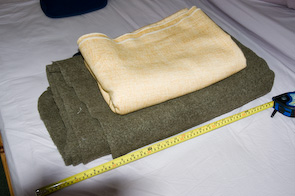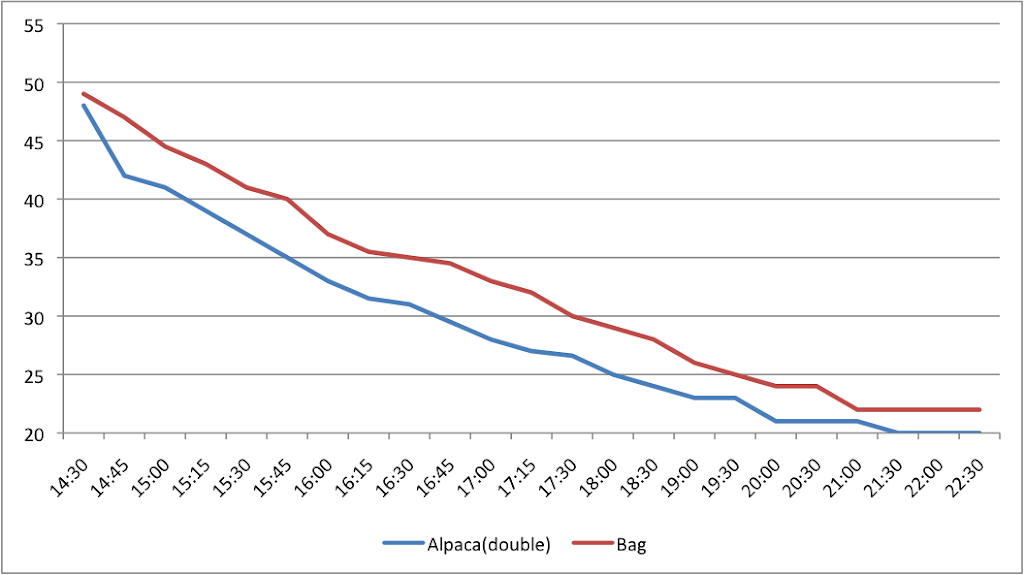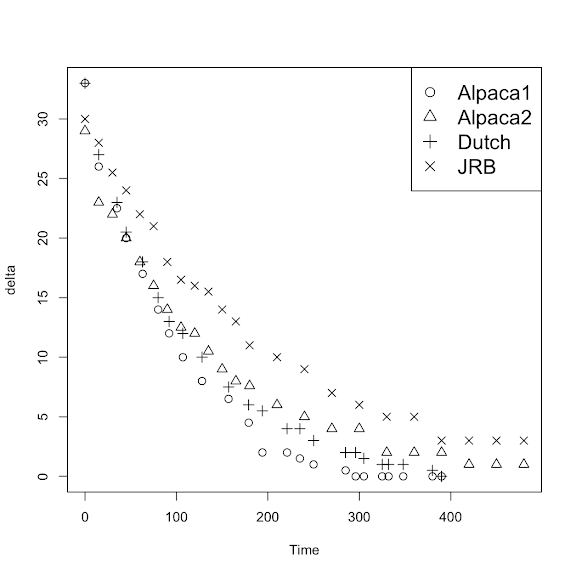Blankets vs sleeping bags
- Thread starter myotis
- Start date
-
Hey Guest, Early bird pricing on the Summer Moot (21st July - 2nd August) available until March 31st, we'd love you to come. PLEASE CLICK HERE to early bird price and get more information.
You are using an out of date browser. It may not display this or other websites correctly.
You should upgrade or use an alternative browser.
You should upgrade or use an alternative browser.
I can't see the blanket picture either.
Mmm strange, both images are in Picasa and both added in an identical manner, and I can see them both.
The only difference is that the blanket pic is a jpeg and the graph a png.
I have now converted the jpeg to a png and tried again.
I can still see it fine, but can you see it now?
thanks,
Graham
Can everybody see it here?

The .png on your post didn't appear, but I could see it on my post? however the .jpg on your modified post now appears.
Weird

The .png on your post didn't appear, but I could see it on my post? however the .jpg on your modified post now appears.
Weird
Can everybody see it here?

The .png on your post didn't appear, but I could see it on my post? however the .jpg on your modified post now appears.
Weird
I can now see it on my original post (both now pngs) and on your post Hopefully others can see it now as well as the difference in bulk between the blankets is worth seing. If anything the Alpaca blanket is even less bulky than this picture suggests.
Thanks for the help.
Graham
Still can't see it...
Scratch that, it's just appeared......
Aren't computers wonderful

Graham
I can see a graph is that all we are supposed to see??
I'm afraid not, there should also be a picture of the two blankets, which should now appear three times in various posts.
It suddenly appeared with Wayland, so it may be there now for you.
If its not, then I am at a loss as to what to do.
Graham
can't see the blanket, but looked at the html source and copied 'n pasted to look at it.
Lets try "insert image":

Work for you? It does for me.
EDIT:
????? This is weird! Now I can see the other photos of the blankets as well.
Lets try "insert image":

Work for you? It does for me.
EDIT:
????? This is weird! Now I can see the other photos of the blankets as well.
can't see the blanket, but looked at the html source and copied 'n pasted to look at it.
Lets try "insert image":
Work for you? It does for me.
EDIT:
????? This is weird! Now I can see the other photos of the blankets as well.
Thanks, hopefully that is everyone able to see it.
I suspect its related to when the browser cache is being updated, and possibly firefox on a Mac (like what I am using ere) may treat inline jpegs differently.
Graham
Well, the saga continues, but this time comparing two layers of the Alpaca with my JRB Hudson River sleeping bag quilt - a good quality 3 season down bag @$250 so 4 to 5 times the price of the Alpaca blanket.
The first graph shows the comparison between them , If you look at the earlier graph comparing the single alpaca with the dutch army blanket, the most obvious thing is how much shallower this graph is. Showing that the temperature of the hot water bottles are falling much slower this time. Note that the bottle under the sleeping bag started off a degree higher than the one under the blanket.

The temperature is up the x axis and in celcius. The ambient temperature was 19 degrees this time instead of 20 degrees for the earlier comparison.
I then plotted all the results together, but showing the difference between the hot water bottle temperature and the ambient temperature. (see below)

The Time axis is the minutes that have elapsed since the first measurement and the delta axis is the temperature difference between the hot water bottle and ambient temperature.
You can see that the sleeping bag performs best, and that the temperature loss isn't linear.
I did a simple linear regression on the first 200 minutes (as that seemed the most linear, and probably covered a more useful range of temperature differences being nearer to body temperarture and with the greatest temerature differential )
This gave regression equations suggesting that the:
JRB lost heat at 6 degrees per hour
two layers of Alpaca lost heat at 6.6 degrees per hour
dutch army blanket lost heat at 7.8 degrees per hour
one layer of Alpaca lost heat at 8.4 degrees per hour
The graphs look like the JRB should be performing with a bigger difference than these figures suggest, but I suspect this is about right for the JRB and its the blankets that are wrong. If you look at the graphs, the JRB response is more linear than the blankets are. I don't have time to do this properly, but rounding the blanket values upwards may allow for a more realistic comparison.
In terms of bulk and weight, the packed sleeping bag (uncompressed) is slightly bigger than the single Alpaca blanket.
The Sleeping bag (quilt) is 2m x 1.2m and weighs in its stuff sac 580g.
If you were to cut the blankets down to match the sleeping bag size, it would make the
Alpaca blanket 464g (928g for two Alpaca blankets) and the dutch army blanket 1.94kg.
So can I draw any conclusions from all this, well not many.
I have only collected data from a single sample in fairly dodgy experimental conditions. I'm also not sure, that in terms of real world performance, whether this can be applied to a human body generating heat, compared to a hot water bottle losing heat.
None the less, things have performed as anticipated with the ranking of the four test items falling where you would expect them to.
As to exactly what it means in practice I'm unsure. The sleeping bag seems something like 3 to 5 degrees warmer than the double alpaca. The double alpaca something like 3 to 4 degrees warmer than the single alpaca, and 1 to 2 degrees warmer than the Dutch army blanket. The dutch army blanket is about 1 to 2 degrees warmer than the single alpaca.
Graham
The first graph shows the comparison between them , If you look at the earlier graph comparing the single alpaca with the dutch army blanket, the most obvious thing is how much shallower this graph is. Showing that the temperature of the hot water bottles are falling much slower this time. Note that the bottle under the sleeping bag started off a degree higher than the one under the blanket.

The temperature is up the x axis and in celcius. The ambient temperature was 19 degrees this time instead of 20 degrees for the earlier comparison.
I then plotted all the results together, but showing the difference between the hot water bottle temperature and the ambient temperature. (see below)

The Time axis is the minutes that have elapsed since the first measurement and the delta axis is the temperature difference between the hot water bottle and ambient temperature.
You can see that the sleeping bag performs best, and that the temperature loss isn't linear.
I did a simple linear regression on the first 200 minutes (as that seemed the most linear, and probably covered a more useful range of temperature differences being nearer to body temperarture and with the greatest temerature differential )
This gave regression equations suggesting that the:
JRB lost heat at 6 degrees per hour
two layers of Alpaca lost heat at 6.6 degrees per hour
dutch army blanket lost heat at 7.8 degrees per hour
one layer of Alpaca lost heat at 8.4 degrees per hour
The graphs look like the JRB should be performing with a bigger difference than these figures suggest, but I suspect this is about right for the JRB and its the blankets that are wrong. If you look at the graphs, the JRB response is more linear than the blankets are. I don't have time to do this properly, but rounding the blanket values upwards may allow for a more realistic comparison.
In terms of bulk and weight, the packed sleeping bag (uncompressed) is slightly bigger than the single Alpaca blanket.
The Sleeping bag (quilt) is 2m x 1.2m and weighs in its stuff sac 580g.
If you were to cut the blankets down to match the sleeping bag size, it would make the
Alpaca blanket 464g (928g for two Alpaca blankets) and the dutch army blanket 1.94kg.
So can I draw any conclusions from all this, well not many.
I have only collected data from a single sample in fairly dodgy experimental conditions. I'm also not sure, that in terms of real world performance, whether this can be applied to a human body generating heat, compared to a hot water bottle losing heat.
None the less, things have performed as anticipated with the ranking of the four test items falling where you would expect them to.
As to exactly what it means in practice I'm unsure. The sleeping bag seems something like 3 to 5 degrees warmer than the double alpaca. The double alpaca something like 3 to 4 degrees warmer than the single alpaca, and 1 to 2 degrees warmer than the Dutch army blanket. The dutch army blanket is about 1 to 2 degrees warmer than the single alpaca.
Graham
Similar threads
- Replies
- 20
- Views
- 709
